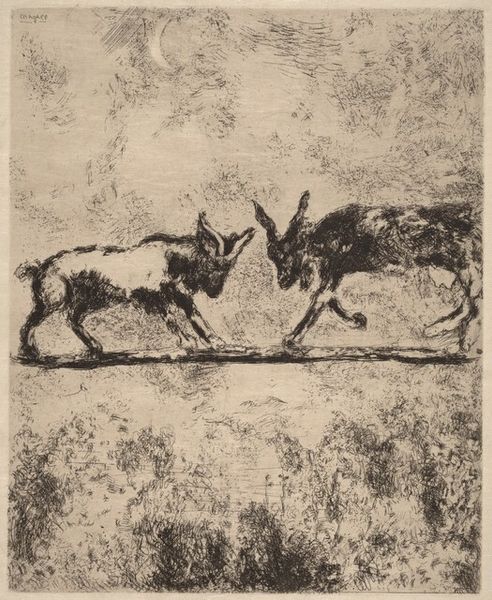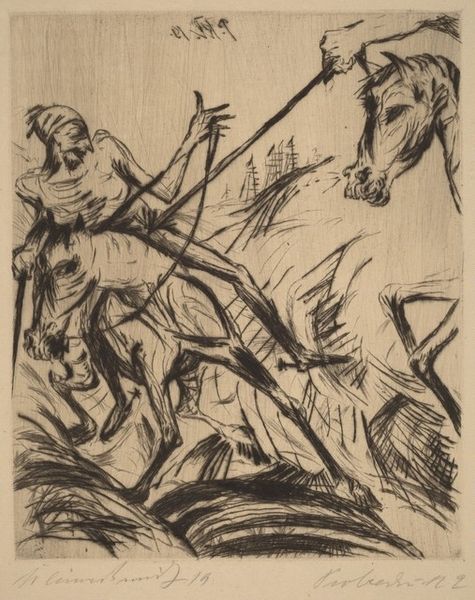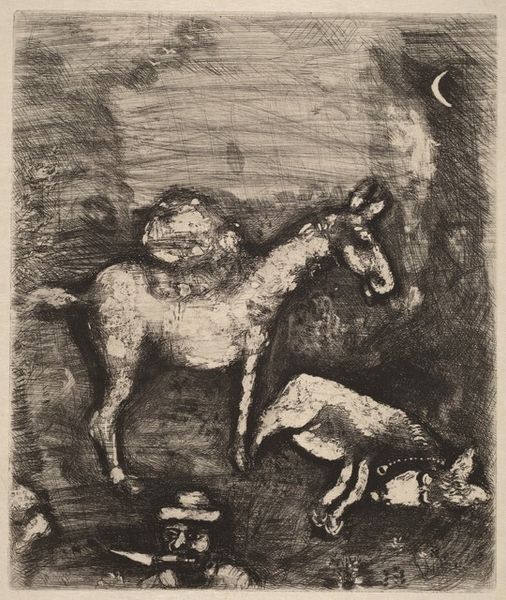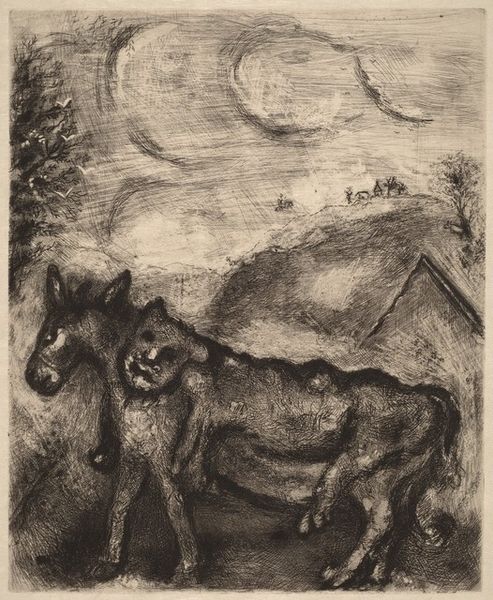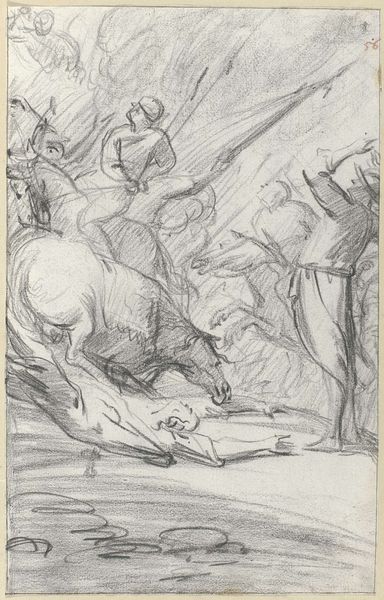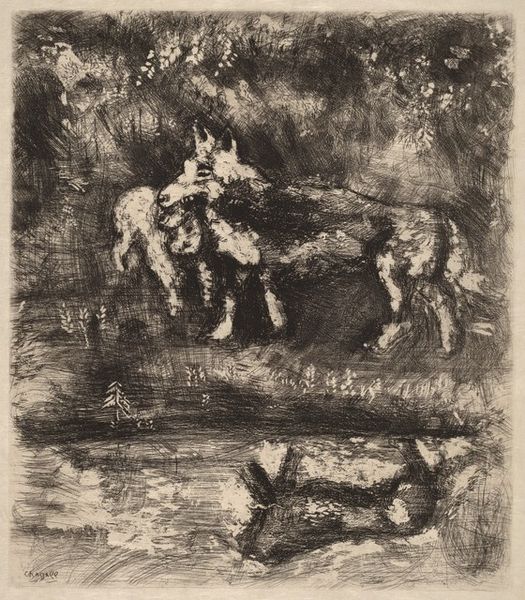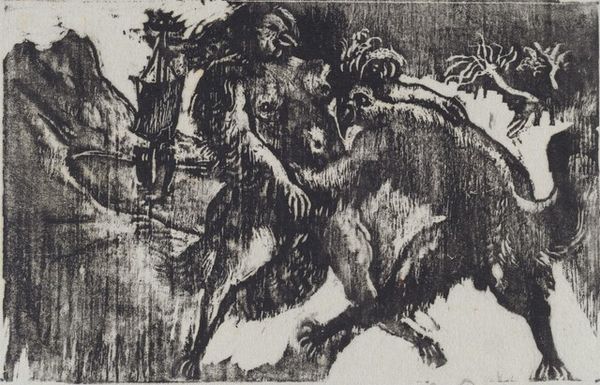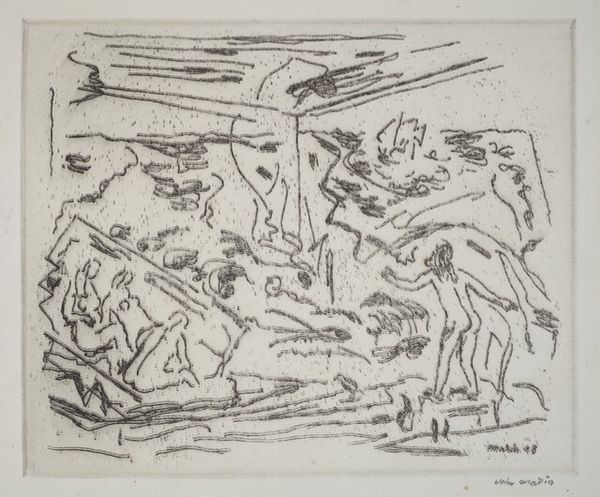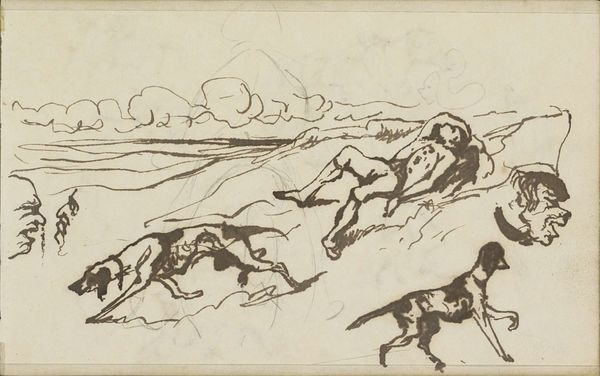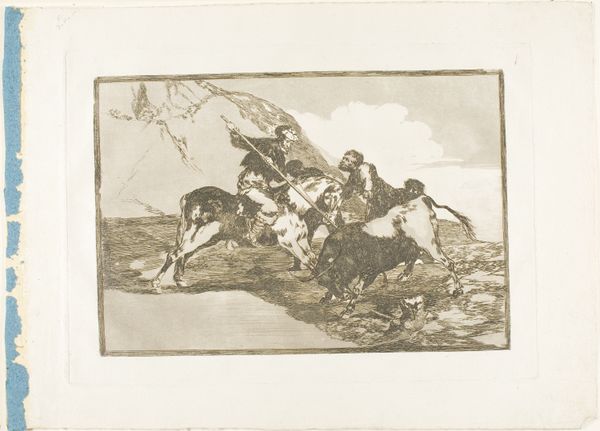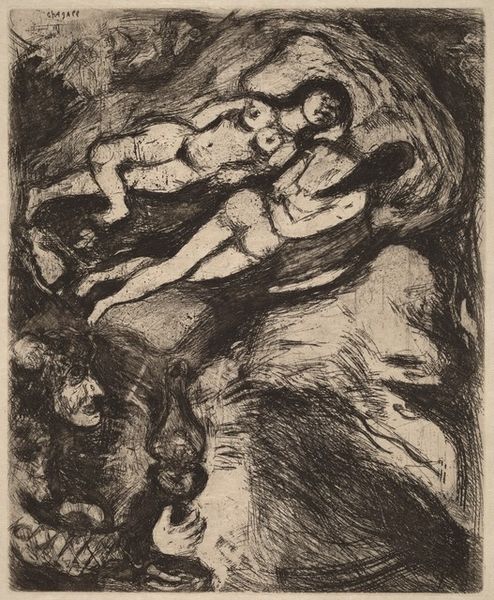
Copyright: National Gallery of Art: CC0 1.0
Marc Chagall’s "The Eye of the Master" invites us into a dreamlike landscape. Rendered in etching, the print presents a world where animals float freely and human figures appear almost as specters. Born in Belarus, which was then part of the Russian Empire, Chagall’s work often grapples with his Jewish heritage and the rapidly changing social landscape of early 20th-century Europe. This piece, with its folkloric imagery, may speak to the artist’s own sense of cultural displacement. The floating animals can be interpreted as a reference to Jewish folklore and Chagall's personal experiences, reflecting the themes of displacement and cultural identity. To truly understand the layers of meaning embedded in Chagall's work, we might delve into studies of Jewish folklore, histories of early 20th-century European art, and Chagall’s own biography, all of which can help us appreciate the depth of the artist’s cultural vision.
Comments
No comments
Be the first to comment and join the conversation on the ultimate creative platform.

